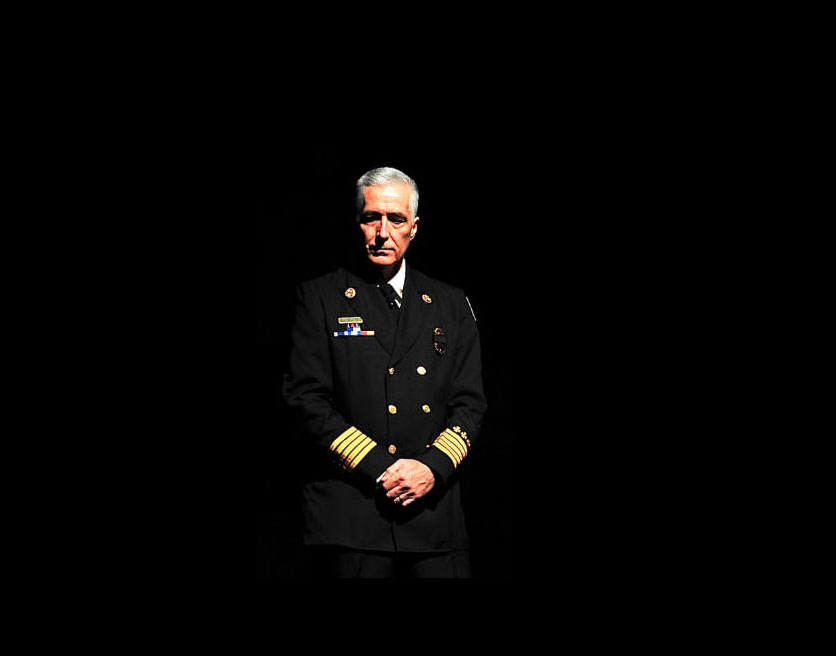
editor’s opinion ❘ By BOBBY HALTON
They say that there is tremendous benefit to using visual imagery. As firefighters, just like athletes, we are taught early in our careers to run incidents through our heads and to imagine or visualize what we would do at every juncture of the incident. Athletes do this prior to a game: They imagine running the play route, catching the ball, and scoring the touchdown. As the firefighter assigned to the nozzle, we might imagine pulling the line, taking the line through the door, and putting out the fire. As the engineer or chauffeur or pump operator, we may imagine spotting our apparatus, connecting to our source, charging the correct pressure to our various lines, and monitoring the radio closely for changing requests or fire behavior.
As we move through the system, we eventually get to a place that has a desk, a chair, a window, and sometimes even our name on the door. At this point, we are often required to come up with game plans for the units that were responsible for the field. Every captain, battalion chief, assistant chief, district chief, commander, and deputy chief has had the experience of being responsible for writing a policy or procedure. When we do this, we imagine the fire or the incident, and then we visualize what we would consider to be best practice locally within our systems for the execution of this particular event. In short, we run the fire or the incident through our heads and try to recall the things that caused us to make decisions that resulted in a positive outcome. We then try to capture those things as best practice. This is a fantastic way to create procedures—by looking at the calls that went right, not the ones that went wrong.
To be effective at creating these policies, guidelines, standard operating procedures (SOPs), or whatever the politically correct term for them is today, it’s really important that we understand every aspect of that particular incident we are now imagining. And the word imagining here is not a derogatory word; it’s exactly what we are doing: We are imagining an event and we are imagining what we think our folks should do to best mitigate and effectively resolve that event. This is a good thing to do. It’s also important to remember the advice from Lieutenant Commander “Drama”: “If you don’t know what’s expected of your people and you don’t know what they’re going through, then you don’t know what you’re doing.”
It’s terribly important that we understand the difference between work as imagined and work as done. And there is a difference. The reason it’s so important to talk about the difference between work as imagined and work as done is that every single event has unique aspects to it that drive the decision making. Every event has aspects that are unique or uniquely timed or uniquely positioned. Those unique aspects drive how we interpret that event and how we choose to react at that event.
Understanding this requires experience in every aspect of the job. That is why no one, absolutely no one, in the fire service should be permitted to construct policy or procedure who has not ascended through every rank in that system before achieving the one at which we are allowed to imagine work and create policy. They have to know what it is like to have skin in the game, to be directly responsible for the consequences of their decisions.
The preeminent American thinker of our time, Nassim Taleb, when speaking of academics, said, “Scholars who do not have skin in the game fail to get that, while in academia there is no difference between academia and the real world, in the real world, there is.”
It’s also important to note here that only those who have ascended through the system sequentially can understand when a deviation occurs at some level because of the perception or understanding of that firefighter in the fire at the time. We know that, despite our best efforts in constructing our best policy and procedures in the imagined world of SOPs, there often is a difference in the real world. For example, if a firefighter chooses to open the line at the door to gain control of the hallway prior to having knowledge of the location of the seat of the fire, a good officer knows that there is often ample justification for that activity. The same can be said of decisions made during search: Often, because of conditions, firefighters will search the most likely locations for a victim first vs. the traditional connection-to-the-wall, full-area search.
This experience helps us to be, again to quote “Drama,” “good dudes.” A good dude will listen to the rationale behind the decision before deciding that the decision was a mistake. You see, decisions are only mistakes in hindsight, not when the person with skin in the game is making them. A good dude will listen and try to understand why it made sense to the firefighters at the time and not immediately assume they knew the ending when they didn’t.
What makes the fire service one of the greatest places in the world to work is that, since our very inception in 06 A.D., we have always owned our work. We cannot escape the risks involved in the decisions we make because we are right there on the scene when those decisions are made. It’s a little different when writing policy and procedure, but the best policies and procedures are written by those who are still responding, by those who will actually have to suffer the consequences of those policies and procedures. Imagination is great, performing the work is greater; that takes courage. To quote Taleb: “Courage is the only virtue that can’t be faked.”

MORE BOBBY HALTON

